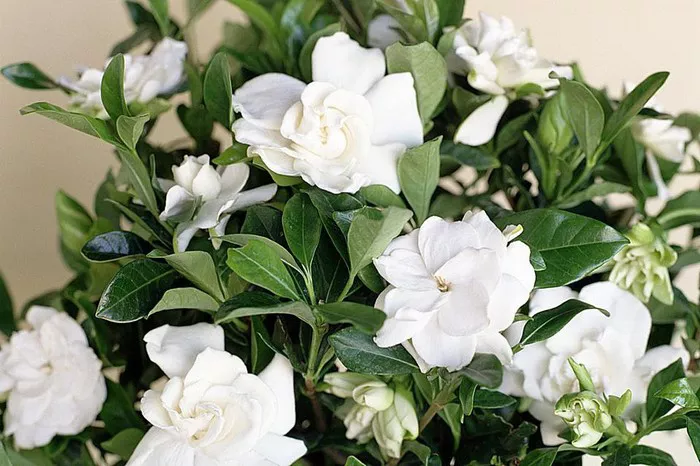Gardenias, cherished for their fragrant blooms and glossy evergreen foliage, are among the most beloved ornamental plants in horticulture. Their elegant appearance and captivating scent make them a popular choice for gardens, balconies, and indoor spaces alike. However, like all living organisms, gardenias have a finite lifespan influenced by various factors. In this comprehensive article, we delve into the lifespan of gardenia plants, exploring the conditions that affect their longevity and offering practical insights for maximizing their lifespan.
Introduction to Gardenia Plants
Gardenias belong to the genus Gardenia, which encompasses over 200 species of flowering plants native to tropical and subtropical regions of Africa, Asia, Australia, and the Pacific Islands. The most commonly cultivated species is Gardenia jasminoides, known for its creamy-white, waxy flowers and glossy, dark green leaves. Gardenias are prized not only for their aesthetic appeal but also for their cultural significance in various traditions and their use in perfumery.
Factors Influencing Gardenia Lifespan
The lifespan of a gardenia plant, like that of any plant species, depends on a combination of genetic factors and environmental conditions. Understanding these factors is crucial for cultivating healthy gardenias and ensuring their longevity.
1. Genetic Factors
The genetic makeup of gardenia plants plays a significant role in determining their lifespan. Different species and cultivars may exhibit varying lifespans due to genetic differences in growth habits, disease resistance, and tolerance to environmental stresses. Selecting healthy, well-adapted cultivars suited to your specific climate can enhance the chances of achieving a long-lived gardenia plant.
2. Environmental Conditions
Climate and Hardiness Zones: Gardenias thrive in temperate to tropical climates, preferring USDA hardiness zones 8 to 11. In these zones, they can be grown outdoors year-round with proper care. In colder climates, gardenias are often grown in containers and brought indoors during winter to protect them from freezing temperatures.
Light Requirements: Adequate light is crucial for the health and longevity of gardenias. They prefer bright, indirect light or partial shade. Insufficient light can lead to leggy growth, reduced flowering, and overall decline in plant health.
Soil Quality and pH: Gardenias require well-draining, acidic soil with a pH between 5.0 and 6.0. Soil that is too alkaline can lead to nutrient deficiencies, particularly in iron, resulting in yellowing leaves (chlorosis) and stunted growth. Amending the soil with organic matter and using fertilizers formulated for acid-loving plants can help maintain optimal soil conditions.
Watering Practices: Proper watering is essential for gardenias. They prefer consistently moist, but not waterlogged, soil. Erratic watering, either too much or too little, can stress the plants and contribute to root rot or dehydration. Mulching around gardenias helps retain soil moisture and regulate temperature fluctuations.
Temperature and Humidity: Gardenias thrive in moderate temperatures ranging from 65°F to 75°F (18°C to 24°C). They are sensitive to extreme heat and cold, which can cause flower buds to drop and leaves to yellow. Maintaining adequate humidity levels, especially indoors during winter or in arid climates, can mitigate stress on the plants.
3. Common Challenges and Pests
Despite their beauty, gardenias are susceptible to certain pests and diseases that can affect their lifespan if not promptly addressed. Common pests include aphids, scales, and whiteflies, while diseases such as powdery mildew and root rot can occur due to poor air circulation or overwatering. Regular monitoring, proper cultural practices, and early intervention with organic or chemical treatments can help minimize these risks.
SEE ALSO: How to Get Gardenias to Flower? A Comprehensive Guide
Maximizing Gardenia Lifespan: Tips for Success
1. Planting and Transplanting
Proper planting techniques, including digging a wide planting hole and amending the soil with compost or peat moss, provide gardenias with a good start. Transplant gardenias carefully to minimize root disturbance, and ensure they are planted at the same depth as they were in their original container.
2. Fertilization
Fertilize gardenias regularly during the growing season with a balanced fertilizer formulated for acid-loving plants. Avoid excessive nitrogen, as it can promote lush foliage growth at the expense of flower production. Cease fertilization in late summer to allow the plant to harden off before winter.
3. Pruning and Deadheading
Prune gardenias selectively to maintain a compact shape and promote air circulation within the canopy. Remove dead or diseased branches promptly to prevent the spread of pathogens. Deadhead spent flowers to encourage continuous blooming throughout the growing season.
4. Winter Care
In colder climates, protect gardenias from frost damage by mulching around the base of the plant and covering them with a frost cloth or moving containers indoors. Ensure indoor gardenias receive adequate light and humidity during winter months.
5. Monitoring and Maintenance
Regularly inspect gardenias for signs of pests, diseases, or nutrient deficiencies. Adjust watering, fertilization, and pest management practices as needed to maintain plant health. Prompt attention to issues ensures gardenias can thrive and reach their maximum lifespan.
Conclusion
In conclusion, the lifespan of gardenia plants can vary depending on genetic factors, environmental conditions, and proper care practices. By understanding these factors and implementing appropriate strategies, gardeners can cultivate healthy gardenias that flourish for many years. Whether grown outdoors in garden beds or containers or indoors as houseplants, gardenias continue to captivate with their exquisite beauty and intoxicating fragrance. With attention to detail and a commitment to their specific needs, gardenias can grace gardens and homes with their presence for generations to come.

